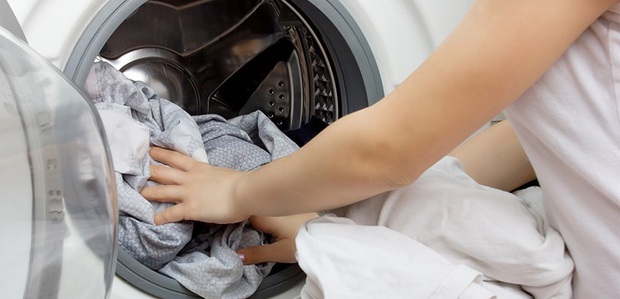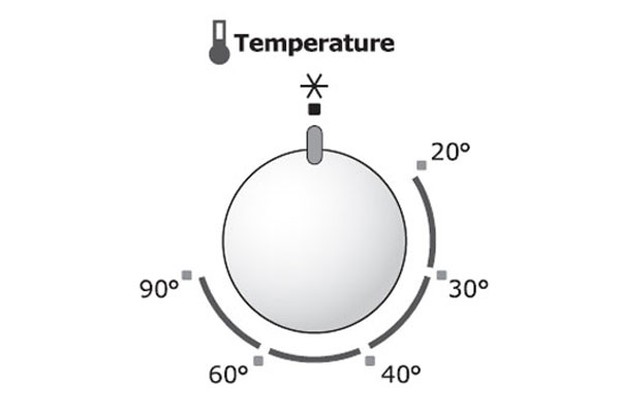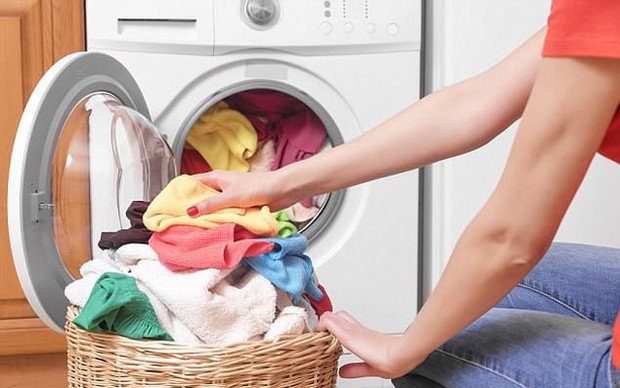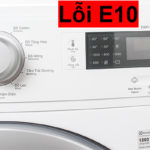When it comes to electronic devices and household appliances, which are present in most households, one name that can’t be forgotten is the washing machine. This device helps to free up human labor in cleaning and washing clothes or fabric items in the house, saving time and ensuring optimal efficiency.
Using a washing machine is considered to be quite simple. Just operate the buttons on the electronic control panel attached to the device. Users can choose the washing mode and time that are suitable for the type of clothing or other personal needs. On average, each family will use the washing machine about 2-3 times a week, depending on the number of family members and the corresponding number of clothes that need to be cleaned. Sometimes the washing machine is even used regularly every day.

The washing machine is a familiar device in modern households (Illustration)
However, despite being a familiar device, the washing machine is not always used correctly. Experts point out that there are some common mistakes that users make which can reduce the machine’s effectiveness, shorten its lifespan, or even cause unnecessary malfunctions.
Ao World, a distributor of household appliances and electric refrigeration operating in the UK, Germany, and the Netherlands since 2000, has provided advice on the 3 most common habits that are considered to be mistakes in many households.
1. Overloading the washing machine
The first mistake identified by Ao World is overloading the washing machine. Many users have the habit of “conveniently” washing as much clothes as possible in one load, even filling up the entire space of the washing drum or overloading it beyond the specified washing capacity of the machine.
Putting too many clothes in the washing machine will prevent them from being properly cleaned (Photo: Ao World)
Experts explain that this will prevent clothes from moving when the washing machine is operating, preventing them from rotating with the flow of water, and causing laundry detergent to not dissolve. As a result, the washing process will not be effective.
All types of washing machines have a specified washing capacity. However, this capacity is the maximum weight of dry laundry that the machine can handle in one operation. For example, for a 7kg washing machine, you are only allowed to wash a maximum of 7kg of dry clothes in one load, without water. After putting the dry clothes in the drum, the machine will add water to a certain level and then start the washing process.
Therefore, it is recommended by experts that users should only load the machine with 70-80% of the washing capacity, or about 2/3 of the drum space. For example, with a 7kg washing machine, the weight of the clothes should only be around 5-6kg.

Only load the washing machine with about 70-80% of its capacity, or about 2/3 of the drum space (Illustration)
2. Overusing the cold wash mode
The second mistake that Ao advises users not to make is overusing the cold wash mode with a low temperature in the washing machine. In some models, users can choose this mode through buttons or select the water temperature for washing clothes.
However, the lowest recommended temperature by experts is around 30°C. Meanwhile, the cold wash mode allows the washing temperature to drop to as low as 20°C. A very low water temperature will slow down the dissolution of laundry detergent or other cleaning agents, or prevent them from dissolving completely. As a result, the effectiveness of cleaning clothes will not be optimal. Additionally, washing clothes at the appropriate temperature will help them stay durable and beautiful for a longer period.
Do not overuse or preferably do not use the cold wash mode of the washing machine (Photo: Ao World)
Here are some suitable temperature levels for different types of fabric and clothing that users can refer to:
– 30 – 40°C: Suitable for thin, easily faded, easily torn, and delicate fabrics
– 40 – 60°C: Suitable for woolen clothes, blankets, sheets, cotton fabrics, and sheepskin fabrics (40°C); towels, underwear, synthetic fiber fabrics; linen fabrics, cotton fabrics, and mixed fabrics (60°C).
– 60 – 90°C: Suitable for washing clothes for infants, babies, clothes that are difficult to remove stains from and linen fabrics (such as bed sheets, tablecloths, etc.).

Water temperature levels in a washing machine (Illustration)
3. Leaving washed clothes in the machine for too long
The last mistake mentioned by Ao is a very common mistake made by many households and users. That is leaving the clothes in the washing machine for a long time after the washing cycle is completed, even overnight.
Experts explain that this will reduce the lifespan of the washing machine. Specifically, in the damp environment with damp clothes, parts of the machine such as the washing tub and the rubber seal of the machine’s door can easily become moldy, grow moss, rust, and have an unpleasant smell that is difficult to remove.
Leaving clothes for too long in the washing machine can cause mold and unpleasant odors (Photo: Ao World)
In addition, the weight of the clothes just washed is usually heavy. The elastic parts of the washing machine will become more worn out and stretched because they have to support a heavy load for too long.
Leaving clothes inside the washing machine for a long time can also result in their deterioration in terms of durability and freshness. In the confined environment of the washing machine, damp and waterlogged clothes are more likely to develop small spots of mold, especially with light-colored clothing. This can become more severe and difficult to treat. In addition, wrinkles will also form, making ironing more difficult.
Therefore, after the washing machine completes its cycle, users should take out the clothes and dry or hang them immediately, the sooner the better. In case you are too busy to air dry the clothes right away, place them in a ventilated container or basket to keep them dry.

Take out the clothes from the washing machine as soon as it finishes washing (Illustration)
In addition to the above-mentioned 3 common mistakes, experts also recommend that users pay attention to and avoid some other habits to ensure the effectiveness and durability of the washing machine:
– Not checking pockets or sleeves for foreign objects before taking them out
– Not zipping up zippers or buttoning up clothes
– Not putting underwear in a separate laundry bag
– Not sorting clothes before washing
– Using too much laundry detergent.
According to Trí Thức Trẻ






































